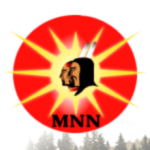 |
| Myron Dewey, Paiute |
Law Enforcement's Secret Surveillance of Defenders at Thacker Pass, Peehee Mu'huh, Exposed by ProPublica and Nevada Independent
By Brenda Norrell, Censored News, July 25, 2025
THACKER PASS, Nevada -- While descendants of the survivors of the massacre of Paiutes at Peehee Mu'huh struggled to protect the sacred remains from the digging of a lithium mine, owned by Lithium Americas on Canada -- law enforcement had a spider web of surveillance.
THACKER PASS, Nevada -- While descendants of the survivors of the massacre of Paiutes at Peehee Mu'huh struggled to protect the sacred remains from the digging of a lithium mine, owned by Lithium Americas on Canada -- law enforcement had a spider web of surveillance.
The law enforcement surveillance of defenders of Peehee Mu'huh, Thacker Pass, began before Myron Dewey was killed, and continued afterwards.
ProPublica and Nevada Independent expose the spy trail of law enforcement and private security of Lithium Americas. The surveillance web of 10 agencies included the BIA, and a counter-terrorism task force.



